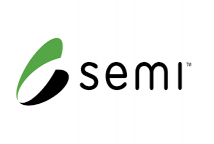一、环境搭建 1. 直接在Ubuntu上运行Framebuffer 默认Ubuntu是直接进入X视窗,如果要使用Framebuffer, 需要修改内核引导参数: $ sudo gedit /etc/default/grub 查找 GRUB_CMDLINE_LINUX_DEFAULT=quiet splash 把它改为 GRUB_CMDLINE_LINUX_DEFAULT=quiet s
一、环境搭建
1. 直接在Ubuntu上运行Framebuffer
默认Ubuntu是直接进入X视窗,一旦要使用Framebuffer,
需要修改内核引导参数:
$ sudo gedit /etc/default/grub
查找
GRUB_CMDLINE_LINUX_DEFAULT="quiet splash"
把它改为
GRUB_CMDLINE_LINUX_DEFAULT="quiet splash text vga=0x311"
这里text表示进入文本模式,vga=0x311表示使用Framebuffer显示驱动,
0x311是指示色深和分辨率的参数
|640x480 800x600 1024x768 1280x1024
----+-------------------------------------
256 | 0x301 0x303 0x305 0x307
32k | 0x310 0x313 0x316 0x319
64k | 0x311 0x314 0x317 0x31A
16M | 0x312 0x315 0x318 0x31B
一旦使用vga=0x311参数,必须使用后面提到的vesafb模块,并且取消黑名单,
否则无法进入系统,需要光盘启动删除vga参数以还原
$ sudo update-grub
写入到/boot/grub/grub.cfg
$ sudo gedit /etc/initramfs-tools/modules
在其中加入:vesafb
$ sudo gedit /etc/modprobe.d/blacklist-framebuffer.conf
用#注释以下行
# blacklist vesafb
$ sudo update-initramfs -u
(生成新的initrd)
然后重启机器,即可进入Framebuffer
一旦要切换回X11,可以输入:
$ startx
有时候/boot/grub/grub.cfg的引导参数不正确导致系统无法引导,
可以用光盘引导系统,挂载硬盘后直接修改/boot/grub/grub.cfg文件
这样就可以跳过update-grub这一步。然后还原原有的引导参数进入X Window
2. 使用qemu虚拟Linux
需要编译Linux内核和busybox。
此外还需要libncurses-dev和qemu。
由于qemu可以直接加载内核和initrd,指定引导参数,
所以不需要修改grub配置。
(1)编译内核和安装qemu
$ tar xjf linux-2.6.39.2.tar.bz2
$ cd linux-2.6.39.2/
$ make help
$ make i386_defconf
$ sudo apt-get install libncurses-dev
$ make menuconfig
$ make
$ sudo apt-get install qemu
$ qemu --help
$ qemu -kernel arch/x86/boot/bzImage
$ qemu -kernel arch/x86/boot/bzImage -append "noapic"
有时候内核会这样崩溃:
MP-BIOS BUG 8254 timer not connected
trying to set up timer as Virtual Wire IRQ
所以需要添加-append "noapic"参数
(2) 修改内核配置,然后重新编译内核。
注意,不同内核版本的配置不一样,
我的内核配置作如下改动(用空格切换为*,不要切换为M):
$ make menuconfig
Device Drivers --->
Graphics support --->
-*- Support for frame buffer devices --->
[*] VESA VGA graphics support
因为VESA支持彩色色深的显示。
默认是不选的,只能是黑白控制台。
Input device support --->
[*] Provide legacy /dev/psaux device
有些库如SDL在识别USB接口的鼠标时会寻找/dev/input/mice和/dev/psaux,
我发现我编译的内核没有前者,所以用这个选项制造出/dev/psaux设备。
File systems --->
[*] Miscellaneous filesystems --->
<*> Compressed ROM file system support (cramfs)
个人喜欢cramfs,不过不是必须的,可以用这个开关编译cramfs驱动,
测试initramfs是否正常
General setup --->
[*] Support initial ramdisks compressed using gzip
[*] Embedded system
默认i86内核的配置不支持gzip压缩的cpio格式initrd,所以需要手动打开它。
最后重新编译内核:
$ make
(3) 编译busybox
$ tar xjf busybox-1.18.5.tar.bz2
$ cd busybox-1.18.5/
$ make defconfig
$ make menuconfig
设置修改如下:
Busybox Settings --->
Build Options --->
[*] Build BusyBox as a static binary (no shared libs)
$ make
$ make install
默认文件安装在当前目录的_install目录下。
(4) 制作cpio封包gzip压缩的initrd
$ cd ../busybox-1.18.5/_install/
$ mkdir proc sys dev etc etc/init.d tmp root usr lib
$ gedit etc/init.d/rcS
#!/bin/sh
mount -t proc none /proc
mount -t sysfs none /sys
/sbin/mdev -s
$ chmod +x etc/init.d/rcS
$ cd ../../linux-2.6.39.2/
$ gedit prerun.sh
#!/bin/sh
cd ../busybox-1.18.5/_install
find . | cpio -o --format=newc > ../rootfs.img
cd ..
gzip -c rootfs.img > rootfs.img.gz
cd ../linux-2.6.39.2/
$ . prerun.sh
$ gedit run.sh
#!/bin/sh
qemu -kernel ./arch/i386/boot/bzImage -initrd ../busybox-1.18.5/rootfs.img.gz -append "root=/dev/ram rdinit=/sbin/init vga=0x312 noapic"
注意这里用rdinit=,一旦用init=就成了initramfs(内核会报告找不到合适的文件系统)
关于vga=的参数设置见前面(决定色深和分辨率)
$ . run.sh
编译程序,然后用上面写的prerun.sh打包进rootfs.img.gz,然后运行run.sh跑qemu即可。
一旦程序是动态链接,需要特定的动态库,
可以把依赖的动态库复制到_install/lib目录下,打包到rootfs.img.gz中。
(5) 可以看进入qemu的效果了
二、Framebuffer的应用开发
1. 基于/lib/fb*设备和mmap
这种方法灵活性差,开发比较费时。
这里有个示例代码,代码如下:
#include <stdlib.h>
#include <unistd.h>
#include <stdio.h>
#include <fcntl.h>
#include <linux/fb.h>
#include <sys/mman.h>
int main()
{
int fbfd = 0;
struct fb_var_screeninfo vinfo;
struct fb_fix_screeninfo finfo;
long int screensize = 0;
char *fbp = 0;
int x = 0, y = 0;
long int location = 0;
fbfd = open("/dev/fb0", O_RDWR);
if (!fbfd) {
printf("Error: cannot open framebuffer device.n");
exit(1);
}
printf("The framebuffer device was opened successfully.n");
if (ioctl(fbfd, FBIOGET_FSCREENINFO, &finfo)) {
printf("Error reading fixed information.n");
exit(2);
}
if (ioctl(fbfd, FBIOGET_VSCREENINFO, &vinfo)) {
printf("Error reading variable information.n");
exit(3);
}
printf("%dx%d, %dbppn", vinfo.xres, vinfo.yres, vinfo.bits_per_pixel );
screensize = vinfo.xres * vinfo.yres * vinfo.bits_per_pixel / 8;
fbp = (char *)mmap(0, screensize, PROT_READ | PROT_WRITE, MAP_SHARED,
fbfd, 0);
if ((int)fbp == -1) {
printf("Error: failed to map framebuffer device to memory.n");
exit(4);
}
printf("The framebuffer device was mapped to memory successfully.n");
x = 100;
y = 100;
for ( y = 100; y < 300; y++ )
for ( x = 100; x < 300; x++ ) {
location = (x+vinfo.xoffset) * (vinfo.bits_per_pixel/8) +
(y+vinfo.yoffset) * finfo.line_length;
if ( vinfo.bits_per_pixel == 32 ) {
*(fbp + location) = 100;
*(fbp + location + 1) = 15+(x-100)/2;
*(fbp + location + 2) = 200-(y-100)/5;
*(fbp + location + 3) = 0;
} else {
int b = 10;
int g = (x-100)/6;
int r = 31-(y-100)/16;
unsigned short int t = r<<11 | g << 5 | b;
*((unsigned short int*)(fbp + location)) = t;
}
}
munmap(fbp, screensize);
close(fbfd);
return 0;
}
(已经在Ubuntu和qemu上测试过)
2. 基于DirectFB
DirectFB好像可以加快Framebuffer的绘画速度。
官方有5个示例代码
http://directfb.org/index.php?path=Development%2FTutorials
DirectFB有支持字体、图片和输入插件,
不过在编译前需要事先安装相关的开发库。
(已经在Ubuntu和qemu上测试过)
3. 基于SDL
SDL支持Framebuffer,因为它底层使用了DirectFB。
Ubuntu的SDL可以在Framebuffer下使用,一旦自己编译SDL的代码,
需要事先编译DirectFB
(已经在Ubuntu和qemu上测试过)
4. 基于GTK+2
项目主页在:
http://www.gtk.org/
GTK+2通过Cairo库的DirectFB后端支持Framebuffer。
并且gtk库在编译时需要填加特定参数
./configure --prefix=$PREFIX --with-gdktarget=directfb --without-x
然后进行编译。
不过GTK+2的编译比较麻烦,并且directfb上GTK+2的开发代码尚不稳定。
测试的可执行文件在/bin/gtk-demo
(在Ubuntu上跑似乎有问题——不知道怎么拖动窗口和退出;未在qemu上测试)
5. 基于Qt
下载在
ftp://ftp.qt.nokia.com/qt/source/
一般需要自己编译
$ tar xzf qt-everywhere-opensource-src-4.8.0-tp.tar.gz
$ cd qt-everywhere-opensource-src-4.8.0-tp/
$ ./configure -shared -static -opensource -embedded generic
虽然-embedded这个参数没有出现在./configure --help里,
但它在这里是有效的。这里不需要添加--prefix参数
$ sudo make -j 4
$ sudo make install
默认装在/usr/local/Trolltech目录下。
示例代码和编译的二进制文件在demos/embedded目录下。
进入framebuffer下的文本模式,
然后运行sudo ./xxx -qws
运行时一旦提示:
Qt/Embedded data directory is not owned by user 0:/tmp/qtembedded-0
可以运行:
sudo chown root:root /tmp/qtembedded-0
一旦要在qemu上跑,需要复制/lib/fonts目录下的字体
(可以在Ubuntu上跑,在qemu上跑似乎有点问题——未解决)
声明: 此文观点不代表本站立场;转载须要保留原文链接;版权疑问请联系我们。










